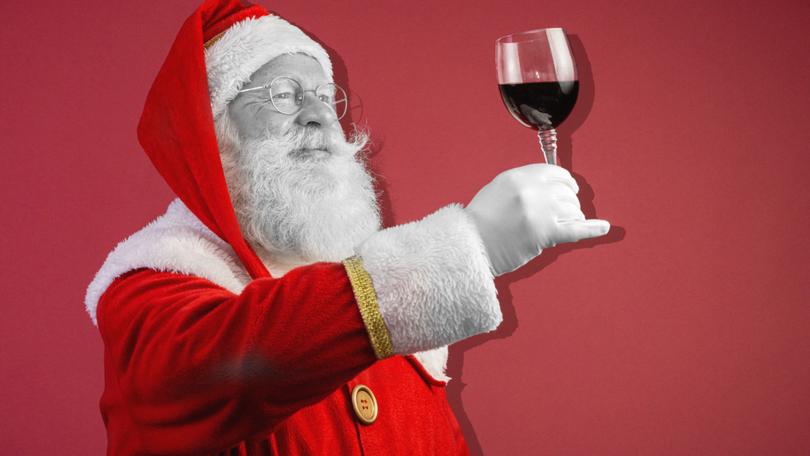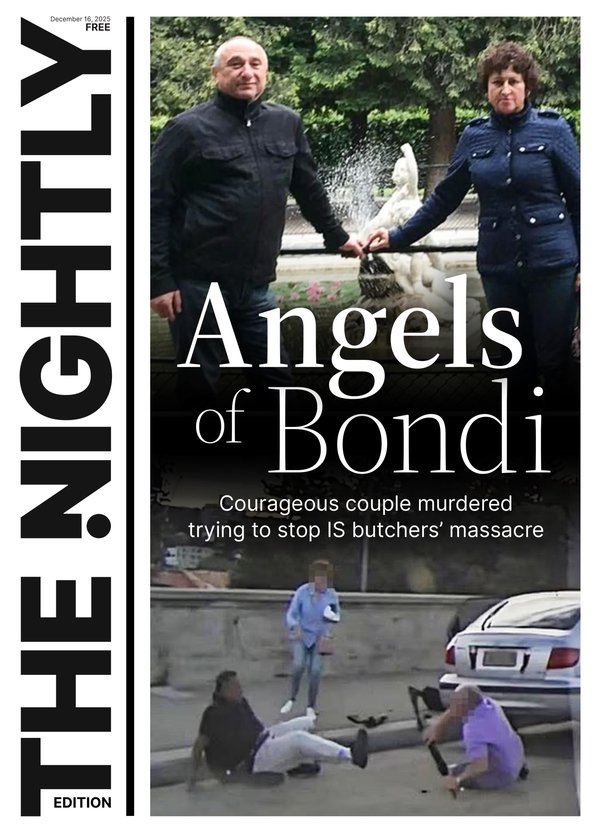SARAH DI LORENZO: Tackling the Christmas drinking dilemma as festive season heats up

This time of year the festive or silly season really starts to kick off.
The pressure to drink alcohol for many ramps up with work Christmas parties, end of year catch ups and that feeling of holidays around the corner. Drinking alcohol is a big part of our culture around Christmas and statistics show that 76.6 per cent of Australian adults drink alcohol with the largest consumption in the 18 to 24-years-old age group.
Interestingly there is a sober curious movement starting where younger people are making the choice to drink less, improve physical and mental well-being, socialising without alcohol and also managing stress booze-free. But while alcohol consumption appears to be going down, it still remains the most widely abused drug in the country.
Sign up to The Nightly's newsletters.
Get the first look at the digital newspaper, curated daily stories and breaking headlines delivered to your inbox.
By continuing you agree to our Terms and Privacy Policy.So what does alcohol do to our body? Recent research indicates that even small amounts of alcohol can be dangerous to the body, increasing the risk of developing disease. Alcohol affects us in lots of different ways. While some are immediate, in the long term it can affect mental health, physical health and the quality of our lives. The impact depends on age, genetics, metabolism, body composition and your health or nutrition status.
Most of us understand alcohol’s effects in the short term — how it can lead to lowered inhibitions, falls, difficulty sleeping, hangovers, possible conflict, dehydration and, to put it simply, altered behaviour. Of course this all depends on how much you have drunk.
But in the long term, consumption of more than two standard drinks a day has been linked to problems with health, and increasing risks of disease development.
Long-term consequences can include diabetes, liver disease, mental health issues such as anxiety and depression, obesity, heart disease, some cancers such as breast and liver, risk to unborn babies, addiction issues, cognitive impairment, social dysfunction, impact on personal relationships, finances, employment and malnutrition.
Alcohol is linked to weight gain, which increases the risk of disease. It stops us from burning fat, is high in calories, increases our hunger and we feel less satiated when we eat, making us want to eat more and increasing our cravings for greasy, salty foods.
Then there is the hangover, the severity of which depends on how your body metabolises alcohol. As you drink it, alcohol triggers frequent urination, dehydration, inflammatory responses from the immune system, a drop in blood sugar, irritation of the stomach lining and expansion of blood vessels. Hangover symptoms include shaking, decreased blood pressure, headache, fatigue, poor concentration, poor sleep, anxiety, irritability, thirst and diarrhea. Hangovers are worse when you drink on an empty stomach, or drink dark coloured alcohol like whiskey and rum and also if you are a smoker.
So while the information above is widely known or, at least most people know that alcohol is not great for our health, most of us humans will continue to drink.
As a practitioner I am a realist when it comes to alcohol. I know if I tell people that drink alcohol not to drink, they will lose interest in my programs. But if I put in alcohol guidelines then they will be compliant to my programs. My guidelines are to stick to no more than seven units a week for both men and women. Pick the nights you want to drink and make a plan that includes staying hydrated and being mindful with food.
I always discourage people from cocktails that can be full of sugar, cream and soft drinks, which all amount to hundreds of calories. For the gin and tonic lovers, just remember that tonic counts as a soft drink. So the worst choices really are mixed drinks with soft drinks and cocktails.
I recommend champagne or a spirit such as gin or vodka but with sparkling water. Both of these sit around 80 calories. My next tier is wine. Be mindful with drinking and stay hydrated, matching a glass of water to each alcoholic drink.
When it comes to alcohol it is very individual, we all have a different relationship with it and how it impacts us. Make the choice that best suits you, don’t be scared to stand up to booze bullies if you want to minimise or avoid drinking and know that education and knowledge is key.

